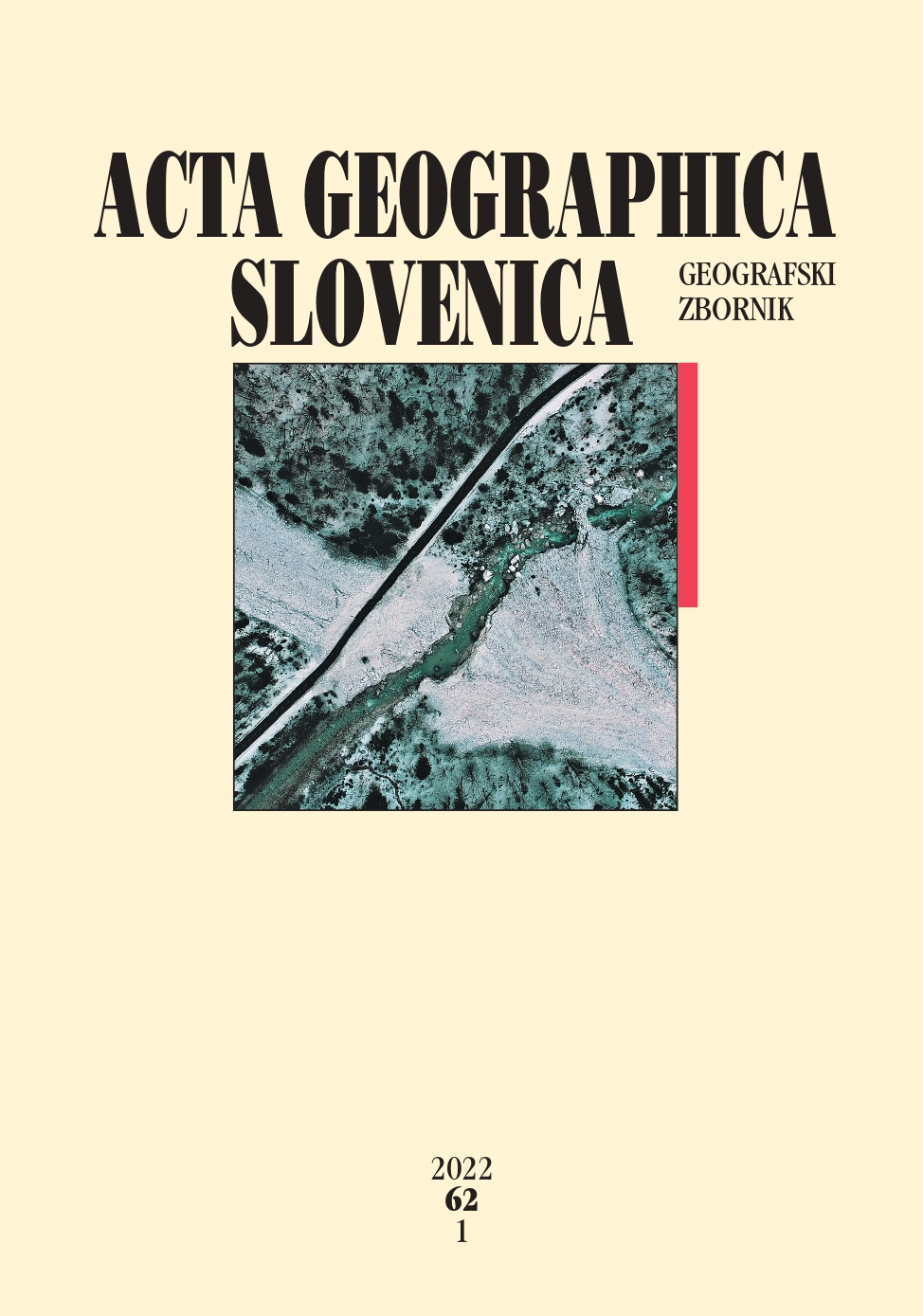Tourism Development Index of local self-government units: The example of Croatia
DOI:
https://doi.org/10.3986/AGS.9814Keywords:
tourism geography, tourism flow, accommodation facilities, employment in tourism and hospitality, tourist destination, regional development, CroatiaAbstract
The goal of the research was to construct a model for calculating the Tourism Development Index (TDI) at the local level. TDI is based on ten indicators: total number of beds, total number of beds per 100 residents, number of beds in hotels and similar establishments, number of beds in hotels and similar establishments per 100 residents, number of tourist arrivals, number of tourist arrivals per capita, number of overnight stays, number of overnight stays per capita, number of employed in tourism and hospitality and share of employed in tourism and hospitality in total employment. Based on TDI, 556 cities/towns and municipalities were categorised into five classes. Due to the usage of both absolute and relative values, TDI recognises the tourism development better than the previously used indices.
Downloads
References
Aubert, A., Jónás-Berki, M., Marton, G. 2013: Tourism index as an indicator of the intensity of tourism. Acta geographica Slovenica 53-2. DOI: https://doi.org/10.3986/AGS53205
Baggio, R. 2018: Measuring tourism: Methods, indicators, and needs. The Future of Tourism: Innovation and Sustainability. Cham. DOI: https://doi.org/10.1007/978-3-319-89941-1_13
Booysen, F. 2002: An overview and evaluation of composite indices of development. Social Indicators Research 59-2. DOI: https://doi.org/10.1023/A:1016275505152
Borzyszkowski, J., Marczak, M., Zarębski, P. 2016: Spatial diversity of tourist function development: The municipalities of Poland’s West Pomerania province. Acta geographica Slovenica 56-2. DOI: https://doi.org/10.3986/AGS.769
Bošković, N., Vujičić, M., Ristić, L. 2019: Sustainable tourism development indicators for mountain destinations in the Republic of Serbia. Current Issues in Tourism 23-22. DOI: https://doi.org/10.1080/13683500.2019.1666807
Chakrabartty, S. N. 2017: Composite index: Methods and properties. Journal of Applied Quantitative Methods 12-2.
Croatian Bureau of Statistics 2020: Tourism, 2019. Statistical Reports 1661. Zagreb.
Curić, Z., Glamuzina, N., Opačić, V. T. 2012: Contemporary issues in the regional development of tourism in Croatia. Hrvatski geografski glasnik 74-1. DOI: https://doi.org/10.21861/HGG.2012.74.01.02
Derek, M. 2008: Funkcja turystyczna jako czynnik rozwoju lokalnego w Polsce, Ph.D. thesis, University of Warsaw. Warsaw.
Durydiwka, M. 2013: Tourist function in rural areas of Poland. Spacial diversity and changing trends. Miscellanea Geographica – Regional Studies on Development 17-3. DOI: https://doi.org/10.2478/v10288-012-0041-2
European Commission 2016: The European tourism indicator system: Toolkit for sustainable destination management. Luxembourg. DOI: doi:10.2873/983087
Glamuzina, N., Madžar, I., Putica, J. 2017: Regional aspects of modern tourism development of Bosnia and Herzegovina. Hrvatski geografski glasnik 79-1. DOI: https://doi.org/10.21861/HGG.2017.79.01.03
Klarić, Z. 1990: Kriteriji za određivanje turističko-geografskih regija (primjer Hrvatske), Ph.D. thesis, University of Zagreb. Zagreb.
Kožić, I., Mikulić, J. 2011: Mogućnosti uspostave sustava pokazatelja za ocjenu i praćenje održivosti turizma u Hrvatskoj. Privredna kretanja i ekonomska politika 21.
Marković, S., Perić, M., Mijatov, M., Doljak, D., Žolna, M. 2017: Application of tourist function indicators in tourism development. Journal of the Geographical Institute Jovan Cvijic 67-2. DOI: https://doi.org/10.2298/IJGI1702163M
OECD 2008: Handbook on constructing composite indicators: Methodology and user guide. Internet: https://www.oecd.org/sdd/42495745.pdf (23. 2. 2022).
Parzych, K. J. 2020: The Polish Baltic coast as a tourist area in the light of tourism indicators. Studia Periegetica 32-4. DOI: https://doi.org/10.5604/01.3001.0014.6595
Pivčević, S., Petrić, L., Mandić, A. 2020: Sustainability of tourism development in the Mediterranean—Interregional similarities and differences. Sustainability 12-18. DOI: https://doi.org/10.3390/su12187641
Roman, Mi., Roman, Mo., Niedziółka, A. 2020: Spatial diversity of tourism in the countries of the European Union. Sustainability 12-7. DOI: https://doi.org/10.3390/su12072713
Šulc, I., Opačić, V. T. 2015: Typology of tourist resorts in Croatia: The case of South Dalmatia. Mitteilungen der Österreichischen Geographischen Gesellschaft 157. DOI: https://doi.org/10.1553/moegg157s229
Vojnović, N. 2013: Application of selected abiotic and ecological indicators of ecologically sustainable tourism on the example of Inner Istria. Geoadria 18-1. DOI: https://doi.org/10.15291/geoadria.148
Vojnović, N. 2018: Tourist intensity in Croatia’s leading tourist towns and municipalities. Geoadria 23-1. DOI: https://doi.org/10.15291/geoadria.1453
Downloads
Published
How to Cite
Issue
Section
License
Copyright (c) 2022 Vuk Tvrtko Opačić, Zoran Klarić, Ivo Beroš, Snježana Boranić Živoder

This work is licensed under a Creative Commons Attribution-NonCommercial-NoDerivatives 4.0 International License.









